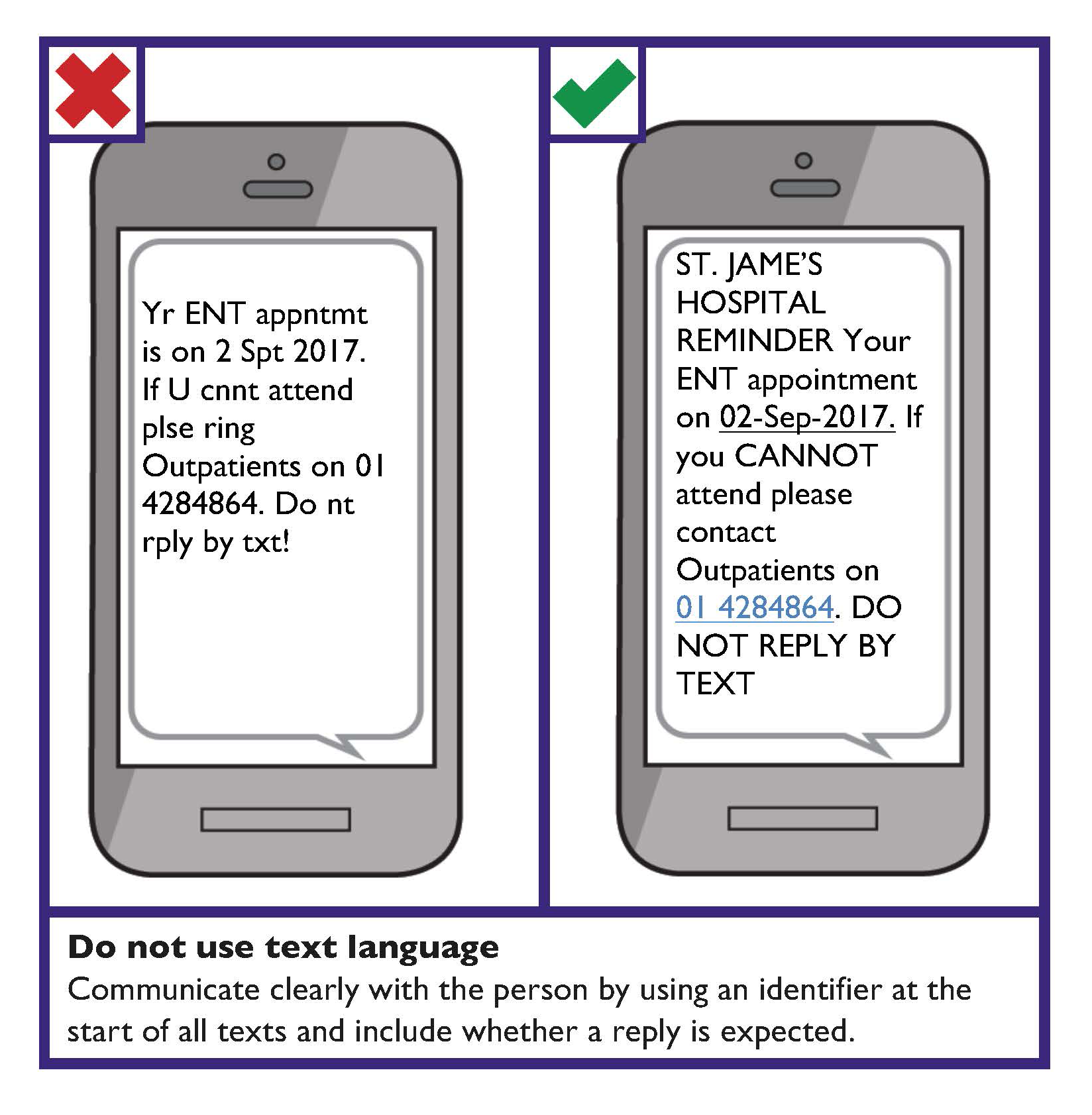There are two general types of SMS (text) services used by public bodies:
- General alerting service: where a public body sends out a general message to a predetermined group of members of the public.
- Direct text communication which involves direct contact between two people on a specific issue. For example, between customer support and a person.
General Guidelines for SMS (texting)
State times that SMS service is available. Where direct text communication is available, clearly state the times that this service is available; for example, between 9.00am and 6.00pm.
Do not use text speak language
Other than in specific contexts, ‘text speak’ language should not be used. Use plain English.
Limit all texts to 160 characters
Keep sentences short.
Use an identifier at the start of all SMS
This will assist members of the public in recognising the number.
Where applicable state whether a reply will cost money and if so how much
If appropriate, include whether a reply is expected or not
If a reply is expected, include a prompt in the SMS such as “Please reply”.
Where immediate response is not intended, send an automatic reply to each SMS received to acknowledge it and provide further information, for example, “Thank you for your enquiry. We will be in contact with you shortly”.
If the SMS received from a person is not clear, seek clarification
For example, “Do you wish to make an appointment for 2.00pm on the 12 July?”
Alternatively use options to obtain information. For example, “Sorry do you mean 1— you wish to make an appointment for 2.00pm on the 12 July? 2 — you wish to cancel your appointment or 3 — do you want to make a new appointment? Please reply with 1,2 or 3.”
If no reply is received after 30 minutes, contact the person again using the previous message and adding a time that you expect a reply by. For example, “Sorry Mrs Smith, do you mean 1— you wish to make an appointment for 2.00pm on the 12 July? 2 — you wish to cancel your appointment or 3 — you want to make a new appointment? Please reply with 1, 2 or 3 before 6.00pm”.
If no further response is received — close the conversation.
When over, finish the conversation
When you have finished the conversation, always end the SMS with a closing phrase. For example, “No need to reply”.
Do not put sensitive information in a SMS
SMS texts should not include or seek confidential information. For example, bank account numbers.
Inform the person of when they might expect a response

SMS Based Communication Checklist
- State the times that SMS service is available.
- Do not use text speak.
- Limit all texts to 160 characters.
- Use an identifier at the start of all SMS.
- Where applicable state whether a reply will cost money (and how much).
- If appropriate, include whether a reply is expected or not.
- If the SMS from a person is unclear, seek clarification.
- When over, finish the conversation.
- Do not put sensitive information in a SMS.
- Inform the person of when they might expect a response.
